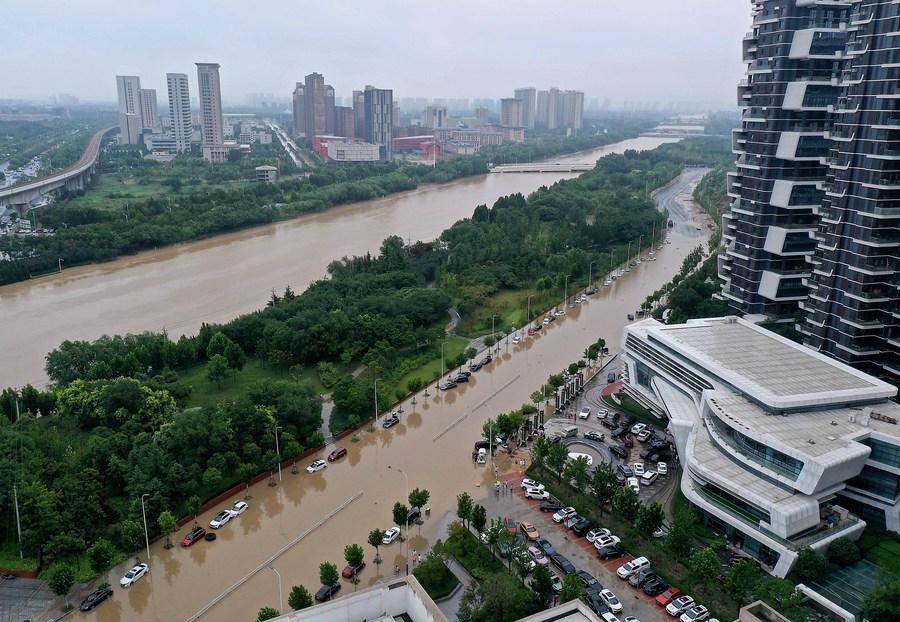IAHR comments on 2021.7.20 flood in Zhengzhou, China
Joseph LEE Hun-wei, CHENG Xiaotao, LI Qinglan
July 23, 2021
Located in Central China, Zhengzhou is the capital city of Henan Province. The annual precipitation is about 630 mm (https://en.wikipedia.org/wiki/Zhengzhou). On July 20, a record-breaking torrential rain of 202 mm fell on Zhengzhou in one hour, with a daily cumulative rainfall of 778 mm. Prior to this flood, the largest daily precipitation in mainland China occurred in Zhumadian, Henan in August 1975 – with hourly and daily rainfalls of 199 mm and 1063 mm respectively.

Aerial photo taken on July 21, 2021 shows submerged roads in flood-hit Zhengdong New District of Zhengzhou, central China's Henan Province. (Xinhua/Li An)
From July 17 to July 21, 2021, the abnormal distribution of mid-latitude and low-latitude multi-scale pressure and associated vortex systems caused continuous water vapor transportation to Henan province. The abnormal weather system coupled with local topographical effects resulted in extreme precipitation; the recorded three-day rainfall was 1073 mm. Although the intensity of the rainfall for the two extreme events in Henan in July 2021 and August 1975 are similar, the causes and impacts are quite different. The 1975 extreme rainstorm was due to Typhoon Nina that moved deep into the continent before stagnated by the Funiu Mountain. In contrast, in 2021 Typhoon In-Fa affecting the rainstorm in Zhengzhou is still thousands of kilometers away in the Pacific Ocean when the disaster struck. The sub-tropical high pressure unexpectedly moved northward earlier than usual and created a westward channel to transport water vapors that then stopped in Zhengzhou without continuing to the mountainous area. The rainstorm in 1975 occurred in an area upstream from the reservoirs, resulting in the failure of two large dams and tens of medium/small dams and an extremely severe dam-break flood. This time the rainstorm fell directly onto a large city (Zhengzhou) with a population of more than 10 million, causing a severe urban flooding disaster.
The urban flooding and waterlogging caused by such extreme rainstorm has far exceeded the design capacity of the local flood control and drainage systems. Disaster mitigation on this scale relies on the effectiveness of emergency response systems and cross-sectoral coordination, and requires general mobilization of the whole society to participate in the rescue and mitigation efforts to restore the functioning of the urban lifeline system.
In an extreme flood disaster like that in Zhengzhou – which is not yet over – much needed efforts remain: hospital and medical relief to all disaster-afflicted families, restoration of urban transportation, communication systems and utilities; sanitation and disease control in water-logged areas; and most importantly, disaster resilience needs to be considered in restoration and reconstruction. The public media can play a positive role by reporting the actual situation of the disaster and identifying necessary relief actions, and appeal for support from all sides.
Climate change impacts have led to more intense rainfalls occurring at higher frequency in many cities. With urbanization and more people living in previously uninhabited upstream catchments, cities are more vulnerable to floods. On July 22, 2010, an hourly rainfall of 115 mm resulted in a debris flood and a boulder current that devastated an entire village in Tai Po, Hong Kong (web link).